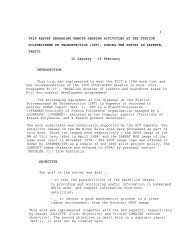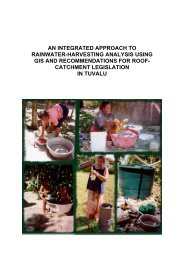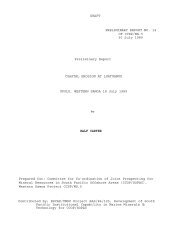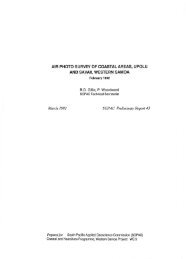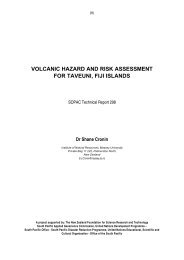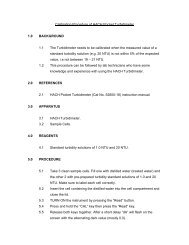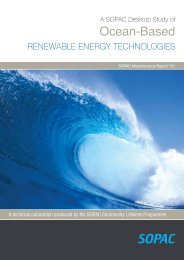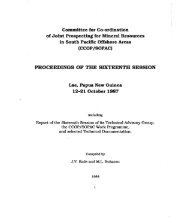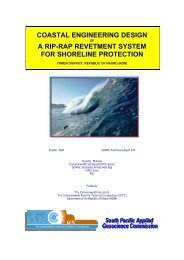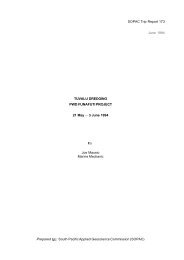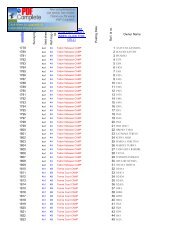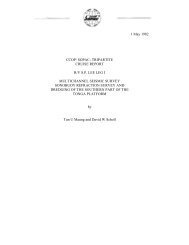Rural water supply and water demand ... - Up To - SOPAC
Rural water supply and water demand ... - Up To - SOPAC
Rural water supply and water demand ... - Up To - SOPAC
You also want an ePaper? Increase the reach of your titles
YUMPU automatically turns print PDFs into web optimized ePapers that Google loves.
1.1 General<br />
[9]<br />
Water Dem<strong>and</strong> Management <strong>and</strong> <strong>Rural</strong> Water Supply<br />
Traditionally WDM projects focus on urban <strong>water</strong> <strong>supply</strong> systems apparently for very obvious<br />
reasons:<br />
• Urban <strong>water</strong> supplies are run by a more or less professionally-organised agency/ utility<br />
hence there is a defined recipient <strong>and</strong> partner for any project.<br />
• The size of most urban <strong>water</strong> <strong>supply</strong> systems generate significant distribution costs <strong>and</strong><br />
in some cases also significant revenues. That allows for relatively straightforward costbenefit-analysis<br />
of WDM measures.<br />
• Urban <strong>water</strong> <strong>supply</strong> systems usually, <strong>and</strong> rather unfortunately, also 'generates' significant<br />
leakage levels making it easier to achieve success.<br />
• Water <strong>supply</strong> problems in urban areas rapidly affect a large number of people making it<br />
more pressing to the <strong>water</strong> utility/ Government to overcome or anticipate such problems.<br />
• Influential people, locals or foreigners, usually reside in urban areas <strong>and</strong> push for<br />
providing an efficient <strong>and</strong> safe <strong>water</strong> <strong>supply</strong> (<strong>and</strong> sanitation).<br />
• Urban areas usually offer a more receptive audience for public awareness campaigns<br />
since they can be considered pure cash-economies.<br />
<strong>Rural</strong> <strong>water</strong> <strong>supply</strong> systems, in contrast, present entirely different problems:<br />
• They are small often with a design flow lower than 1 l/s.<br />
• Design st<strong>and</strong>ards are rudimentary <strong>and</strong> systems are often fragmented since there is little<br />
control over who's connecting <strong>and</strong> how the connection is being done.<br />
• They are owned by the community <strong>and</strong> managed by a <strong>water</strong> committee (if at all<br />
implemented) which rarely has the expertise, skills <strong>and</strong> financial resources to do so.<br />
• Running costs are mostly insignificant hence rarely seem to justify complex WDM<br />
measures/ projects.<br />
• <strong>Rural</strong> <strong>water</strong> <strong>supply</strong> means that there are many <strong>water</strong> <strong>supply</strong> systems often difficult to<br />
reach.<br />
All these points seem to impede WDM measures <strong>and</strong> ideas which are more consequently<br />
applied to urban <strong>water</strong> <strong>supply</strong> schemes. However, there are important considerations that<br />
WDM should play a bigger role in rural <strong>water</strong> <strong>supply</strong>.<br />
[MR351 - Schölzel]



